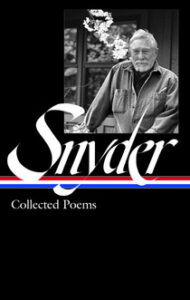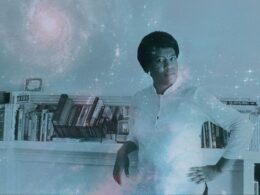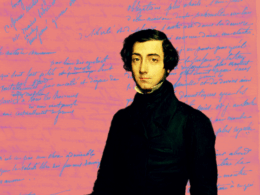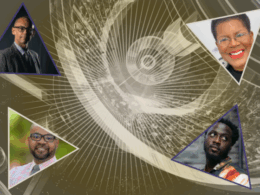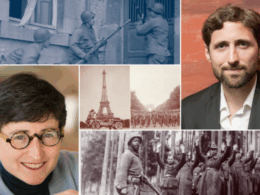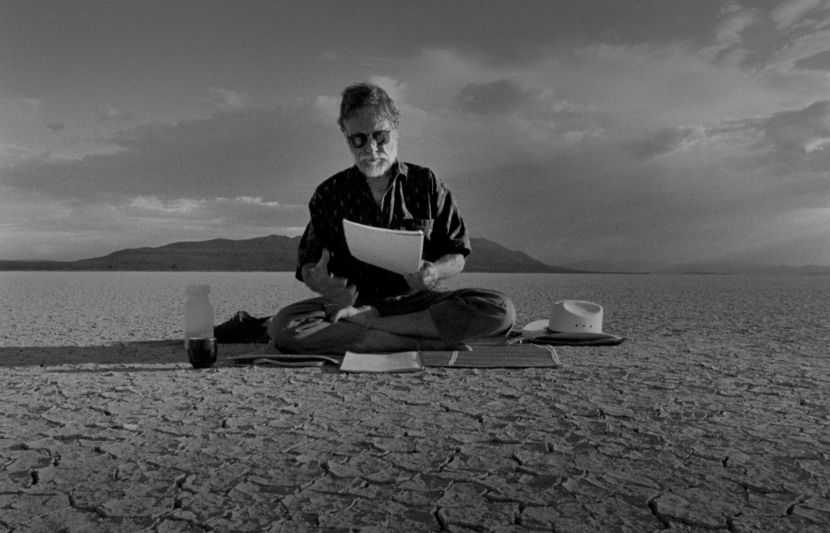
O Mother Gaia: The World of Gary Snyder (Optic Nerve, dir. Colin Still)
On the occasion of poet and environmental writer Gary Snyder’s ninety-fifth birthday, Library of America was honored to host a limited-time screening of O Mother Gaia: The World of Gary Snyder, filmmaker Colin Still’s intimate and engrossing documentary about this singular voice and mind in our nation’s literature. Below, read Still’s reflections on the film’s production and his longstanding love for Snyder’s work, and watch a curated selection of excerpts and outtakes from the documentary.
by Colin Still
O Mother Gaia: The World of Gary Snyder was a long time in the making. I’m a London-based filmmaker with an interest in American poetry dating back to my school days, when I encountered the poems of William Carlos Williams.
My awareness of Snyder’s work goes back to 1960, with the publication of Donald Allen’s groundbreaking anthology The New American Poetry 1945–60, which included a section of Myths & Texts. This was followed by the publication in the UK by Fulcrum Press of Collected Poems and The Back Country, books which I’ve treasured for sixty years (my copies now signed by the poet himself).
Watch: Trailer | O Mother Gaia: The World of Gary Snyder
What attracted me to Snyder’s work was his spare, tightly focused language (“lay down these words before your mind like rocks, placed solid, by hands, in choice of place,” as he writes in Riprap), his deep knowledge of and respect for the natural world, and, although I was not myself a Buddhist, the spiritual dimension of his work.
From the outset it had been my hope that, were the opportunity to present itself, I would be able to re-edit the footage to make a longer and more ambitious film, a plan which appealed to Snyder and to the other participants.
I met Snyder in 1986, when, appropriately, I hitchhiked my way to the Geraldine Dodge Poetry Festival in rural New Jersey, where he was reading with Allen Ginsberg and Amiri Baraka. Seizing the opportunity to engage him in conversation, I asked him whether he might be interested in my making a film on him and his work. To my pleasure he politely, though rather cautiously, said that he would consider the idea if I could get funding for it. I sensed that this was far from the first time he’d been approached in this way.
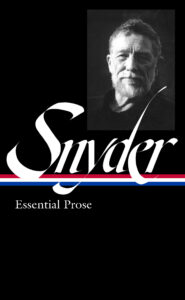
Gary Snyder: Essential Prose
Back in London I made many attempts to raise finance for the film, but to no avail, so the project went on hold. In 1995 I approached the UK’s Channel 4 Television, this time with the proposal that I make a series of five films on American poets: one on Snyder and others on William Carlos Williams, Allen Ginsberg, Amiri Baraka, and Frank O’Hara. My approach was successful, but with the twin provisos that the films must be precisely 28 minutes long and accessible to high school students, as the channel would be commissioning the work from their educational budget.
I immediately contacted Gary’s publisher and it was agreed that I should visit him, along with my camera assistant, and later my editor, Anna Price. We discussed what I had in mind, and plans were set in motion to start filming that autumn. Something we discussed was who would be in the film apart from Snyder and his wife, Carole Koda. Ultimately we arrived at what seemed to be the perfect combination of interviewees: poets Allen Ginsberg, Michael McClure, and Jane Hirshfield; Snyder’s publisher Jack Shoemaker; and actor, Buddhist, and environmentalist Peter Coyote.
The shoot, most of which took place near Gary’s home on the San Juan Ridge in California, north of Nevada City, went ahead that July. Because of my modest budget, I worked with a three-person American crew who would film the interviews on videotape while I shot everything else on film using an ancient 16mm camera which I bought specifically for the project. This worked very well. The interviewees were generous with their time and their contributions were uniformly excellent. All, from their different perspectives, were able to speak about Snyder’s life, his poems (which they discussed in detail), his work as a pioneering bio-regionalist, and his Buddhist practice.
From the outset it had been my hope that, were the opportunity to present itself, I would be able to re-edit the footage to make a longer and more ambitious film, a plan which appealed to Gary and to the other participants. Back in the UK the film was well received and had its television screenings, but there was no appetite on the part of the commissioning editors to make an extended version.
That seemed to be the end of the project, until, many years later, I became aware that, after a certain period, the rights to the footage would revert to me. With this in mind, and without any additional funding, I addressed the task of re-editing the material, a lengthy process involving the re-digitizing of all the footage and combing through the many hours of interviews. This resulted in the present film, O Mother Gaia, which, along with the companion piece Songs from Turtle Island, runs to 127 minutes.
The work was completed in 2024, nearly thirty years after the original filming, and received its world premiere in March 2025 in San Rafael, under the auspices of the International Buddhist Film Festival. Gary, to my great pleasure, was able to attend the screening, where he was greeted with a standing ovation from the packed audience. He was very evidently touched by this, and, I think—certainly I hope—he enjoyed the film, which had been initiated as long ago as 1986.
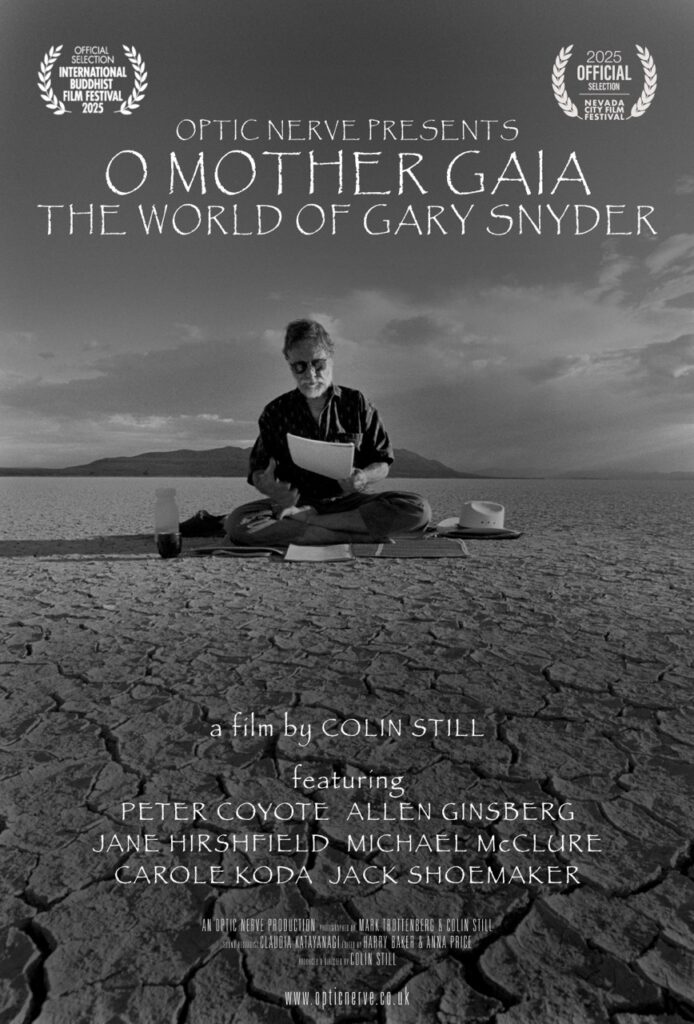
Poster for O Mother Gaia: The World of Gary Snyder
Watch: Excerpts and Extras from O Mother Gaia: The World of Gary Snyder
1. Bring in the Ax, the Rake, the Wood
2. The San Francisco Scene
3. Sourdough Mountain Lookout
4. Dharma Bums
5. Journals & Notebooks
6. Straits of Malacca
7. San Juan Ridge
8. Why Log-Truck Drivers Rise Earlier Than Students of Zen
